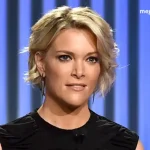Introduction to Zooskooñ
In recent years, the term “zooskooñ” has emerged within conservation circles and among animal welfare advocates. While the word itself may sound novel, it encapsulates a broader dialogue regarding the ethical management of zoos and animal habitats. As our understanding of animal behavior, welfare, and ecological balance evolves, the concept of zooskooñ serves as a vital framework for examining how we house, care for, and educate the public about animals in captivity.
In this article, we will explore the definition of zooskooñ, its implications for zoos, the role they play in conservation, and how they can transition towards more ethical practices. By the end of this exploration, readers will gain a comprehensive understanding of zooskooñ and its significance in the realm of modern conservation efforts.
The Evolution of Zoos into Zooskooñ
The Traditional Zoo Model
Historically, zoos were established primarily for entertainment purposes, showcasing exotic animals for the public’s enjoyment. This often resulted in inadequate living conditions, minimal consideration for the animals’ natural behaviors, and limited educational outreach. The highlights of early zoos were often viewing spectacles rather than thoughtful exhibits that respect the needs and welfare of their inhabitants.
Shifting Paradigms: The Birth of Zooskooñ
As societal values have shifted towards prioritizing animal welfare and conservation, the traditional zoo model has been scrutinized. The term “zooskooñ” signifies an informed approach to redefining these institutions. It emphasizes compassion, education, and the promotion of biodiversity, stressing that zoos should function not merely as a means of displaying animals but as vital centers for conservation efforts.
The Core Principles of Zooskooñ
Ethical Treatment of Animals
At the forefront of zooskooñ is the ethical treatment of animals. This involves creating environments that mimic natural habitats, allowing for species-appropriate behaviors and social structures. Zooskooñ advocates for the eradication of cages and the introduction of enclosures that enhance the well-being of animals. This paradigm shift emphasizes the responsibility of zoos to not only house animals but to ensure their mental and physical health is prioritized.
Conservation and Education
Zooskooñ underscores the dual role of modern zoos: conservation and education. Many zoos engage in captive breeding programs for endangered species and facilitate research to enhance conservation efforts in the wild. Zooskooñ promotes educational initiatives that inform visitors about ecological conservation and the challenges faced by wildlife. By incorporating these aspects into their mission, zoos can become critical allies in global biodiversity efforts.
Community Engagement
A crucial element of zooskooñ lies in community outreach. Engaging local communities in conservation efforts ensures that the public recognizes the interconnectedness of nature and human activity. Zoos that follow the zooskooñ ethos organize workshops, volunteer days, and educational programs to involve the public in active conservation efforts, fostering a sense of stewardship for local and global ecosystems.
The Role of Zooskooñ in Modern Conservation
Success Stories from Zoos
Several zoos have embraced the principles of zooskooñ, transforming themselves into conservation hubs. For example, the San Diego Zoo has made significant strides in breeding endangered species, such as the California condor, and releasing them back into their natural habitats. Their efforts underscore the potential that modern zoos have to contribute to viable conservation strategies.
The Woburn Safari Park in the UK exemplifies a well-planned approach to animal care and conservation education. By providing expansive environments for animals and hosting educational initiatives, they effectively engage the community and raise awareness about wildlife preservation.
Addressing Challenges
Despite the benefits that zooskooñ presents, challenges remain. Ethical dilemmas often arise regarding the extent to which animals should be kept in captivity. The debate over which species should be housed in zoos continues, with some advocates arguing that only those species that can thrive in captivity should be included in zoos’ animal care programs.
Furthermore, funding and resources play a significant role in the successful implementation of zooskooñ principles. Many zoos face budget constraints that limit their ability to provide adequate facilities and programs. Therefore, innovative partnerships with wildlife organizations, governments, and educational institutions are crucial for sustaining efforts in conservation and animal welfare.
The Future of Zoos in the Context of Zooskooñ
Transition Towards a Sustainable Model
As we look ahead, the future of zoos must align with the principles of zooskooñ. This involves rethinking not only how zoos operate but also how they position themselves within the broader conservation framework. Transitioning to a sustainable model entails adopting practices that lessen the ecological impact of zoos while enhancing the well-being of their inhabitants.
Collaborative Conservation Efforts
Moving forward, collaboration among zoos, conservation organizations, and governments will be vital. By pooling resources, sharing knowledge, and working towards common conservation goals, zoos can amplify their impact on biodiversity. Such cooperative efforts can empower zoos to take on larger conservation initiatives extending beyond their physical boundaries.
Conclusion
Zooskooñ represents a transformative approach to re-imagining zoos and their role in conservation. By prioritizing ethical treatment, educational outreach, and community engagement, zoos can evolve into critical players in global biodiversity preservation. As we continue to redefine the zoo experience, embracing the principles of zooskooñ offers a pathway towards a future where all creatures, regardless of their habitat, can coexist harmoniously and thrive.
Through ongoing support and awareness, we can ensure that zoos not only serve as gateways to wildlife education but also act as bastions of conservation, bringing humanity one step closer to a more sustainable coexistence with nature.




